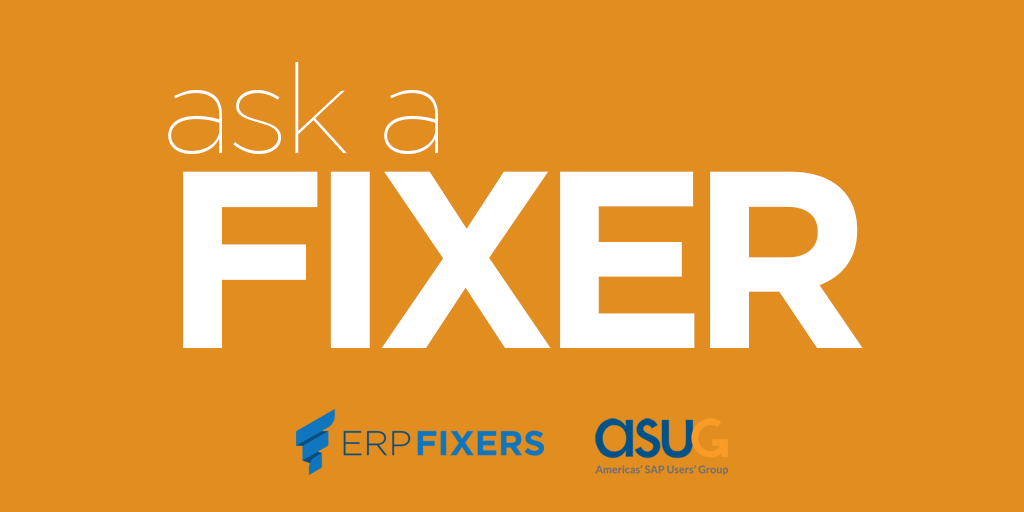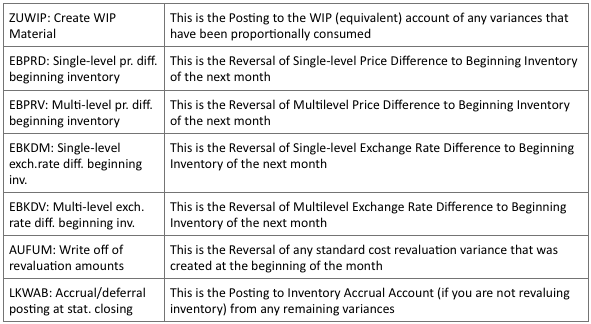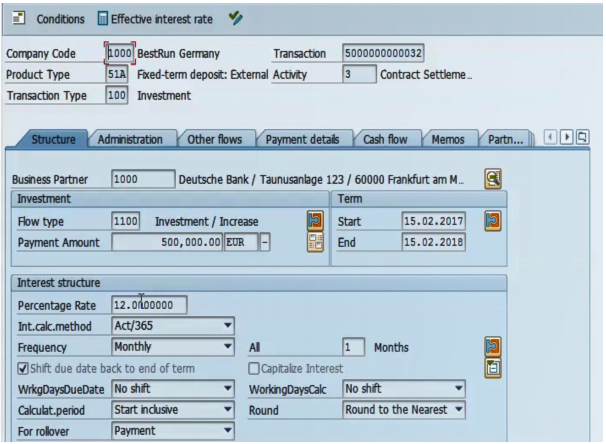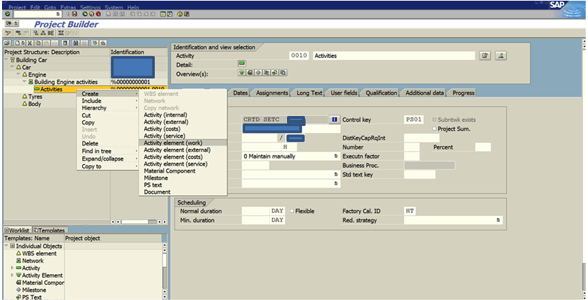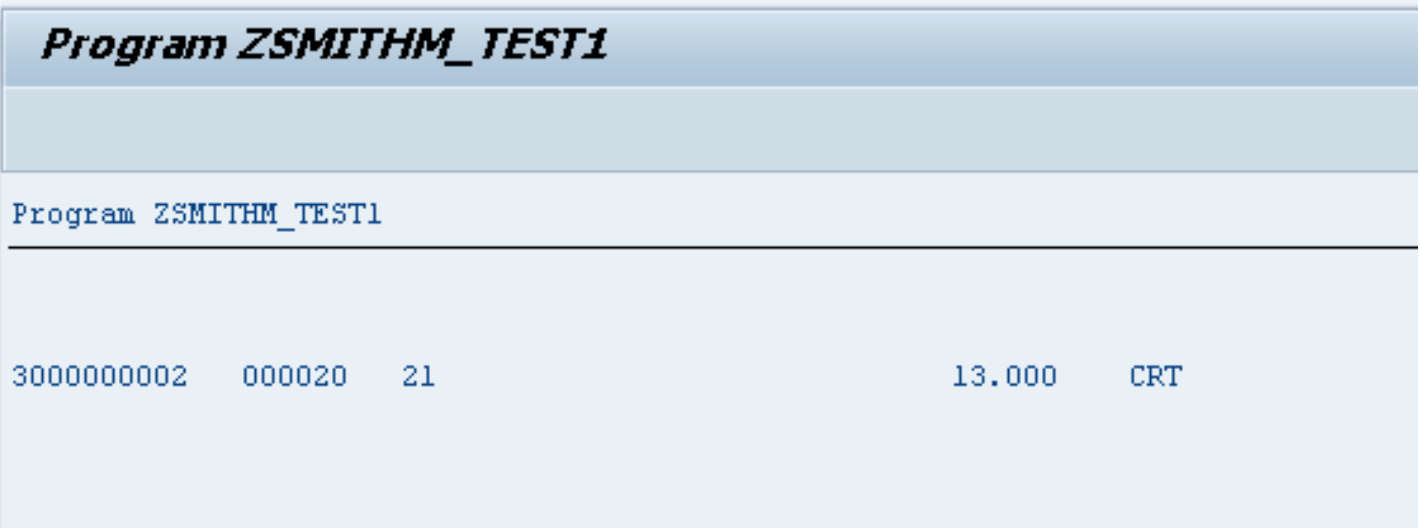Q: If you do not currently use the Fixed Assets module in SAP, and you are planning on moving to S/4 HANA, is it better to implement Fixed Assets before you move to S/4 or after?
A: Assuming that you are on SAP, it depends whether you have the new GL or not (as New GL is a pre-requisite for New Asset Accounting), whether you plan to have additional accounting principles, and whether you are converting to S/4 HANA on-premise or doing a Greenfield implementation, which version you are planning to move to and when. Uploading an excel file with batch processing via the LSMW is not available at the moment on-premise, but you can use a BAPI. An asset upload is usually easier at a year end. If you are already on NewGL and planning to convert to S/4HANA at a year end, it may be easier to get the asset upload out of the way before the S/4 HANA migration. In all cases I would get expert advice to examine all the facts before making a decision.
A: The fiscal year end of asset accounting must agree with the fiscal year end of Finance, (even if the periods differ) but how can you map a depreciation area with one fiscal year end if you have a different fiscal year end for the parallel ledger in finance?
Q: Lets say you have 0L with March year end and 2L with Dec year end. Create a new ledger e.g. NL with March year end and add to a new ledger group so the new ledger group has both 2L and NL in it and mark NL as the representative ledger and map the depreciation area for the Dec year end to the new ledger group. This should allow you to post from asset accounting to a different year end in finance.
Q: Can you map depreciation areas to appendix or extension ledgers in finance?
A: No this cannot be done at the moment. The extension ledger posts only delta postings in finance.
Q: If you have an asset with different useful lives for example for local GAAP and IFRS, so that the total depreciation calculated to date is different, and you make a sale to a customer, how does the system post the different values to different ledgers, but the same amount to the customer?
A: The system will automatically use the technical clearing account in a similar way to an acquisition to post the different values in different ledgers.
Q: Can you set up asset accounting with Central Finance on S/4HANA?
A: FI documents from Asset Accounting that are sent to Central Finance are only replicated as FI documents and not currently as fixed assets, and some of the fixed asset information may be removed. Therefore, although in the source system, the APC and accumulated depreciation accounts are set up as reconciliation accounts, in the SAP S/4HANA Finance system, they are not and accept only finance postings.
Q: Is it beneficial to implement new asset accounting prior to upgrading to S/4 Hana?
A: Assuming that you are on SAP, it depends whether you have the new GL or not (as New GL is a pre-requisite for New Asset Accounting), whether you plan to have additional accounting principles, and whether you are converting to S/4 HANA on-premise or doing a Greenfield implementation, which version you are planning to move to and when. Uploading an excel file with batch processing via the LSMW is not available at the moment on-premise, but you can use a BAPI. An asset upload is usually easier at a year end. If you are already on NewGL and planning to convert to S/4HANA at a year end, it may be easier to get the asset upload out of the way before the S/4 HANA migration. In all cases I would get expert advice to examine all the facts before making a decision.
Q: For parallel ledgers with differing fiscal year variants, is the migration scenario mandatory for new primary ledger with same fiscal year variant as leading ledger? Or, can new primary ledger be treated as a "technical ledger" only?
A: I think you can use the representative ledger box to get round this. Lets say you have 0L with March year end and 2L with Dec year end. Create a new ledger e.g. NL with March year end and add to a new ledger group so the new ledger group has both 2L and NL in it and mark NL as the representative ledger and map the depreciation area for the Dec year end to the new ledger group. This should allow you to post from asset accounting to a different year end in finance.
Q: Each currency needs separate Dep. Area. Can you please elaborate this from with current ECC EHP6 scenario?
A: It is the same principle as in ECC6, if you have two currencies in finance for a ledger you will need two depreciation areas, one for each currency, for that accounting principle. The main difference is that you no longer need any delta depreciation areas.
Q: How is archiving of FI_DOCUMNT impacted?
A: Not sure if this is a question about new asset accounting or asking if an S/4HANA migration affects already archived documents, or how documents are archived on S/4HANA.
Q: Where do you configure technical clearing account? In AO90 - Asset account determination, or somewhere else? Can you please specify.
A: You cannot configure the technical clearing account in AO90. It has its own section in the New Asset Accounting section under Integration with General Ledger Accounting in the IMG.
Q: I heard a new year could not be opened independently in both Finance and Asset Accounting and is done in a single t-code which is balance carry forward. The carry forward transaction to open the new year can’t be processed if the previous year hasn’t been closed. Does this mean that AJAB closing asset has to be performed before we open a new fiscal year?
A: It is correct that transaction FAGLGVTR, which is the general ledger carry forward is now used for asset accounting as well. However it only opens the new year and you can continue to post to the old year. You should not need to close the old year with AJAB before opening the new year. (In ECC6 i have seen the old year closed 10months later in one company).
Q: If LSMW doesn't work, will tools like WinShuttle or SHDB work?
A: It depends on the version of S/4HANA - I believe the Cloud version has its own tools. For on-premise you can use a BAPI, or transaction AS100 if you don't have too many items, or can split the upload into 2 or 3 uploads.I have not used either Winshuttle nor SHDB to upload to S/4HANA, the Winshuttle website mentions Certified S/4HANA integration including the 1610 version, but I don't know about SHDB.
Q: For Depreciation areas that do not post to FI where is the data kept and what does it look like what tables do reports run against? Is it held in ADOCA and marked as statistical in some way?
A: ACDOCA contains actual data by ledger and therefore if a depreciation area is not mapped to a ledger it can't record data from it. FAAT_DOC_IT will contain statistical data. Most of the asset reports can be run by depreciation area so you can see data in the asset module for all the depreciation areas in the same way.
Q: Can we change accounting principle on a depreciation area after the initial migration?
A: During the migration you may need to do some changes to the configuration, but if you want to point one depreciation area at a completely different ledger, It would be best to check with SAP as I am not sure of the consequences.
Q: Can we still use calculated depreciation areas in S4 still posting to ledge?
A: Yes, although as with most of my answers, you should carry out extensive testing to make sure that the results are as you expect.
Q: FYI: LSMW is still officially supported for RE and FI-AA legacy conversion. It just requires that you use the BAPI_FIXEDASSET_OVRTAKE_CREATE rather than a screen recording. Note 2208321 has more information.
A: In the Simplification List issued for the S/4HANA 1610 release, it states: ""The LSMW (Legacy System Migration Workbench) function is still available within SAP S/4HANA, (onpremise edition) but not considered as the migration tool. LSMW might propose incorrect migration interfaces that cannot be used in SAP S/4HANA anymore. The Legacy System Migration Workbench (LSMW) is an SAP NetWeaver tool for data migration that was first introduced with R/2 to R/3 migrations. It uses standard interfaces like BAPIs, IDocs, Direct Input and Batch Input programs and recordings. Due to this nature, the use of LSMW is restricted for migrations to SAP S/4HANA. The Legacy System Migration Workbench (LSMW) can only be considered as a migration tool for SAP S/4HANA using workarounds and careful testing for each and every object. The use of LSMW for data load to SAP S/4HANA is not recommended and at the customer's own risk. However it then goes on to quote the OSS note 2208321 for one of the workarounds - hence the confusion.
Q: Will you still have the tax deprn available for reporting?
A: If I understand the question, if you have a tax depreciation area set up and you keep that tax depreciation you should be able to continue to report on it after a migration.
Q: Pease could you confirm. I believe you said migration had to occur at fiscal year end and that you could not reopen the prior year once the migration was over. Our tax only books are often re-opened for the prior year.
A: I believe a New GL migration has to occur at a fiscal year end, but an S/4HANA migration, can occur at any period end. If I mentioned a closed fiscal year could not be re-opened after migration I was referring specifically to a closed fixed asset year end at the time of migration.
Q: Does HANA still support multiple Chart of Accounts? Or are these now unified into a single CoA?
A: If you mean for example an operating chart or accounts, local chart of accounts or group chart of accounts, then they behave the same in S/4HANA. You still have the option to add a local chart of accounts to the company code in global parameters and enter the alternative account number in the GL account master data.
Q: We have to report by tax jurisdiction and have the tax jurisdiction on the asset will that still be there?
A: The tax jurisdiction field is still available in the asset master data.
Q: Is it possible to add parallel ledgers at the same time as S/4HANA migration?
A: You cannot add parallel ledgers during the migration. I understand that adding parallel ledgers once on S/4HANA is now available since version 1610 on-premise.
Q: Could the AP invoice in the example have been posted w/ different amounts by ledger?
A: The initial AP invoice would have the same amount for each ledger, so for example the whole amount in one ledger could be capitalized and the whole amount in the other ledger could be expensed, but if you wanted to transfer part of the amount to say shipping costs you would need a subsequent journal using FB01L or AB01L posting to just the one ledger.
Q: It seems in 1605 you must add then parallel ledger in separate year. can you do it in the same year as migration then with 1610?
A: I think it would be safer to check with SAP as I am not 100% sure of when the parallel ledgers can be added.
Q: We calculate tax depreciation each month and report it at the end of the year the the taxing authority we have a special tax depreciation area.
A: I see no reason that this would not work on S/4HANA although would need more detail to be sure what the exact question is.
Q: Can you open the new year with a pending new project adding a parallel ledger?
A: I think it would be safer to check with SAP as I am not 100% sure of when the parallel ledgers can be added.
Q: Heard that carry forward is only needed one time and will update automatically after performed if posting is made to prior year in the ledger. is this correct?
A: This is the carry forward transaction FAGLGVTR - this is how it worked in ECC6 and as far as I am aware should work the same in S/4HANA.






